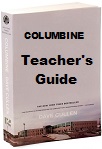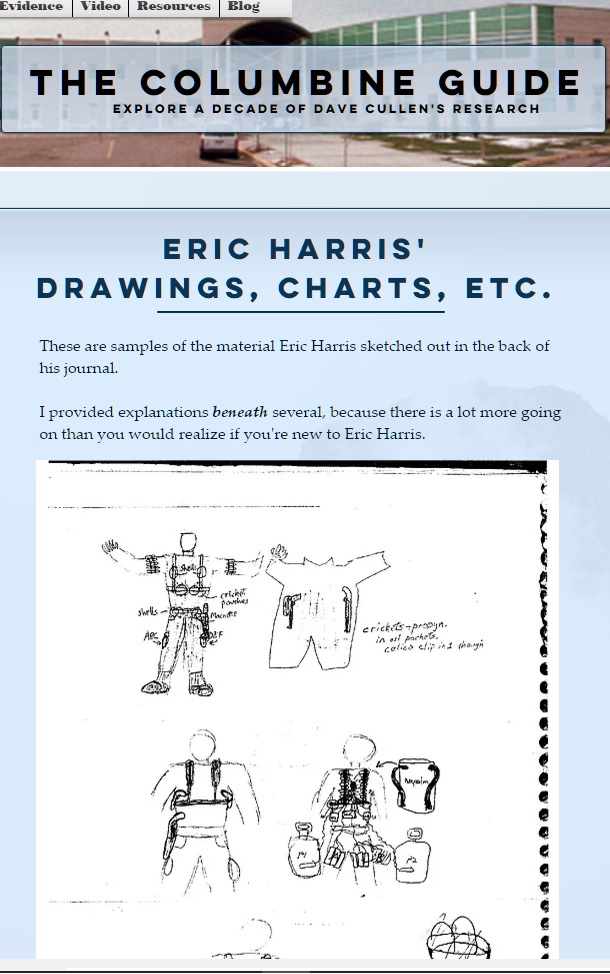Teen Depression 101
It you are in distress or danger scroll down to:
Topics
For discussions, student papers or class presentations
- What is depression?
- Distinguishing depression from “sadness”
- Prevalence: 6% of U.S. teens
- Consequences:
- Impact on kids: drug and alcohol, teen pregnancy, school dropout, misery, suicide
- Impact on the school system—and the economy when it continues to adulthood
- Detection and prevention
- Treatment: options/efficacy
- Depressives who kill:
- The role of depression in Columbine
- Prevalence of depression in other attacks
-
Your peers
- Spotting it in your friends
- Approaching friends in danger
- Who could you turn to for help?
-
Yourself
- Spotting it in yourself
- Options
- Who could you turn to?
- Your school, college, or community:
- What is in place now?
- How could it be improved?
- What can you do?
Reading Assignments
Columbine passages, pages:
- 126-129 (Chapter 23, “Gifted Boy”)
- 173-176 (Chapter 31, “The Seeker”)
- 182-183, 185-186 (the Dylan passages from Chapter 33 “Good-bye”)
Discussion Questions
The questions are in two groups: 1) the affliction, 2) Dylan Klebold as case study:
Questions on the Affliction of Depression
-
Explain the difference between clinical depression and “sadness.” What makes depression so dangerous?
-
Identify five common consequences of depression. Discuss how each one can devastate the life of a teenager.
-
Did you know 6% of U.S. teens suffer clinical depression? Discuss the impact to schools and individuals. Alternative: discuss the economic impact on adults.
-
Outline the two major strategies for treating depression. How successful are they?
-
Discuss the controversies surrounding pharmacological treatment. Is there legitimate cause for concern?
-
Discuss the suicide rate among teens. What are the key warning signs? How do you approach a classmate you fear is in danger? What can you do if you fear it in yourself?
-
React to the statement: “Parents and schools are drugging our kids out of our problem.” Are anti-depressants over-prescribed? Under-prescribed? Take a position.
-
What causes depression? Are there genetic predispositions? How significant are external factors in bringing it on (e.g., breakup with a boyfriend/girlfriend)? Who is most at-risk?
-
Does a depression diagnosis still carry a social stigma? How might that change?
-
What have organizations like the U.S. Preventive Services Task Force recommended as strategies for diagnosis and treatment?
-
What is in place in your school to diagnose and treat kids in trouble for depression? How effective is it? How could that change?
-
How well do most depressed teens understand their own condition? Are they aware they are depressed?
-
Do most depressed teens hide it? Who are they most and least likely to tell? Why are their parents least likely to know?
-
Outline recent advances in the diagnosis or treatment of depression. What lies on the horizon?
-
In severe cases, do depressives usually cry out for help in some way before committing suicide or murder?
-
Anti-depressants carry a risk warning of potentially increasing the risk of suicide among some patients, primarily during the very early stages of treatment. Explain why this phenomenon occurs. How significant is the incidence of this problem? Is it greater or smaller than the number believed to be kept from suicide by the same treatment?
Case Study: Questions on Depression and Dylan Klebold
-
What role did depression play in the attack? Would Dylan have killed people if he’d been diagnosed and treated?
-
Describe the misery Dylan was going through. What was so painful for him? Did that change over time? How did his responses to it change?
-
How did Dylan see himself? How did his self-image compare to objective assessments (e.g., based on his social calendar, how his friends saw him and related to him, etc.)
-
Why was Dylan never diagnosed with depression? Should he have been? How do you think that would have affected the outcome?
-
How often do angry depressives commit murder? Outline the progression from suicide through single murder to mass murder. What causes a person to make that progression?
-
Read the essay published by his mother, Susan Klebold in 2009. List five warning signs she could identify in retrospect. How common are each? How does a parent, teacher or friend know when to take each one seriously?
Further Reading
Note: The author recommends that every student addressing this topic should read the essay by Dylan's mother, Sue Klebold.
-
Anderson, Scott, "The Urge to End It." New York Times Magazine. July 6, 2008.
-
Klebold, Sue. "I Will Never Know Why." O, the Oprah Magazine. October 13, 2009.
-
U.S. Preventive Services Task Force, "Screening and Treatment for Major Depressive Disorder in Children and Adolescents: US Preventive Services Task Force Recommendation Statement" Pediatrics, April 2009.
-
Teen Suicide Hotline: 1-800-SUICIDE
-
Depression Hotline: 630-482-9696
-
Suicide prevention programs: 630-482-9696
-
Prevention of Depression in At-Risk Adolescents: Landmark study in JAMA, 2009
-
For gay kids:
- The Trevor Project: 866-488-7386
- It Gets Better Project
-
Bullying:
Warning Signs of Depression
From National Institute of Mental Health
-
Persistent sad, anxious or "empty" feelings
-
Feelings of hopelessness and/or pessimism
-
Feelings of guilt, worthlessness and/or helplessness
-
Irritability, restlessness
-
Loss of interest in activities or hobbies once pleasurable, including sex
-
Fatigue and decreased energy
-
Difficulty concentrating, remembering details and making decisions
-
Insomnia, early–morning wakefulness, or excessive sleeping
-
Overeating, or appetite loss
-
Thoughts of suicide, suicide attempts
-
Persistent aches or pains, headaches, cramps or digestive problems that do not ease even with treatment
Warning Signs of Suicide
From The Trevor Project
-
Increased isolation—from family and friends
-
Alcohol or drug use increases
-
Expression of negative attitude toward self
-
Expression of hopelessness or helplessness
-
Change in regular behavior
-
Loss of interest in usual activities
-
Giving away valued possessions
-
Expression of a lack of future orientation (i.e. "It won't matter soon anyway")
-
Expressing suicidal feelings
-
Signs of depression
-
Describes a specific plan for suicide
-
History of suicide in the family
-
A person who has been extremely depressed in the past may be at an increased risk for suicide if the depression begins to cease, as they may now have the psychological energy to follow through on a suicidal ideation.
Facts About Teen Suicide
From The Trevor Project
- Suicide is the third leading cause of death among 15 to 24-year-olds, accounting for over 12% of deaths in this age group; only accidents and homicide occur more frequently (National Adolescent Health Information 2006).
- Suicide is the second leading cause of death on college campuses (CDC 2008).
- Lesbian, gay, and bisexual youth are up to four times more likely to attempt suicide than their heterosexual peers (Massachusetts Youth Risk Survey 2007).




